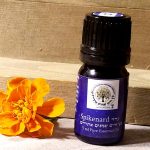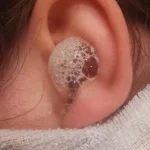Can You Put Olbas Oil In Your Ear?

Olbas Oil is a popular herbal oil blend known for its aromatic and therapeutic properties. It is a unique combination of essential oils derived from several aromatic plants, carefully blended to create a distinctive menthol-like fragrance. Olbas Oil has been widely used for many years as a natural remedy to provide relief from various respiratory and muscular discomforts.
The main essential oils in Olbas Oil include:
1. Peppermint Oil: Known for its refreshing and cooling sensation, peppermint oil contains menthol, which helps open up congested airways and provides a soothing effect.
2. Eucalyptus Oil: Eucalyptus oil is well-known for its antiseptic and decongestant properties. It is often used to ease breathing by reducing inflammation in the respiratory tract.
3. Cajuput Oil: Derived from the cajuput tree, this oil is believed to have antimicrobial properties and is commonly used to combat respiratory infections.
4. Juniper Berry Oil: Juniper berry oil is used for its calming and soothing effects on sore muscles and joints, contributing to the overall relaxation benefits of Olbas Oil.
5. Wintergreen Oil: With its minty scent, wintergreen oil is used for its analgesic properties and can help alleviate discomfort associated with muscle and joint pain.
6. Clove Oil: Known for its warm and spicy aroma, clove oil adds to the overall aromatic experience of Olbas Oil.
These essential oils work synergistically to create a powerful herbal blend with a pleasant aroma. The combination of their properties makes Olbas Oil a popular choice for providing respiratory relief, easing congestion, soothing sore muscles, and promoting relaxation.
Olbas Oil is commonly used in the following ways:
1. Topical Application: Diluted with a carrier oil (such as almond oil or coconut oil), Olbas Oil is applied to the chest, back, or throat to relieve respiratory discomfort and congestion. It can also be used as a massage oil to relax sore muscles and joints.
2. Steam Inhalation: A few drops of Olbas Oil are added to a bowl of hot water, and the vapors are inhaled to help clear nasal passages and ease breathing during cold and allergy seasons.
3. Diffusion: Using an essential oil diffuser, Olbas Oil is dispersed into the air, filling the room with its invigorating and comforting aroma. Diffusing Olbas Oil creates a pleasant atmosphere and promotes relaxation.
Typically, Olbas Oil is used externally, applied to the chest or under the nose to alleviate cold and flu symptoms, clear nasal passages, and ease breathing. It is also used in steam inhalation or added to a diffuser to provide a comforting aroma during cold and allergy seasons. This article explores the safety considerations and potential benefits of using Olbas Oil in the ear.
Can Olbas Oil be Used in the Ear?
No, you should never put Olbas Oil or any other essential oil directly into the ear canal. The ear is a sensitive and delicate part of the body, and introducing any foreign substance, including essential oils, into the ear canal can lead to potential risks and complications which can include:
1. Irritation and Allergic Reactions: Essential oils contain potent chemical compounds that can cause skin irritation and allergic reactions in some individuals. The skin lining the ear canal is delicate and prone to irritation. A study found that certain essential oils, when applied topically, can cause skin irritation in susceptible individuals.
2. Inflammation: Applying essential oils directly to the ear canal may lead to inflammation, which can cause discomfort, redness, and swelling. According to a recently published research, certain essential oils have demonstrated pro-inflammatory effects on skin cells when used in higher concentrations.
3. Ear Infections: Inappropriately using essential oils in the ear canal can disrupt the natural protective barriers and increase the risk of ear infections. Research has shown that introducing essential oils into the ear disturbs the ear’s normal pH balance, which usually prevents the growth of harmful microorganisms. As a consequence, individuals who misuse essential oils in their ears have a higher likelihood of experiencing external ear canal infections compared to those who don’t.
4. Damage to Ear Structures: The ear canal is a delicate passageway that leads to the eardrum and middle ear. Introducing essential oils directly into the ear canal can potentially damage the sensitive structures inside.
5. Hearing Loss: When essential oils are used inappropriately in the ear canal, it can lead to hearing impairment, particularly in severe cases. The delicate structures within the ear, including the eardrum and the tiny hair cells responsible for detecting sound vibrations, can be negatively affected by the chemical compounds in essential oils. This can result in temporary or even permanent hearing loss, depending on the severity of the exposure.
6. Ototoxicity: Ototoxicity refers to the property of certain substances, including some essential oils, to cause damage to the auditory and balance systems in the inner ear. When ototoxic essential oils come into contact with the inner ear, they may disrupt the normal functioning of the sensory cells, leading to balance problems, dizziness, and hearing difficulties. While animal studies have shown potential ototoxic effects of specific essential oils, caution should be exercised when using any essential oil near the ears to prevent such complications.
7. Risk of Aspiration: Placing essential oils too deeply into the ear can create a risk of aspiration, which is when the oils are accidentally inhaled into the respiratory system. Aspiration of essential oils can cause irritation to the respiratory tract and lungs, leading to coughing, wheezing, and difficulty breathing. It’s essential to be cautious and avoid introducing essential oils too far into the ear canal to prevent this potential complication.
Consulting a Healthcare Professional
If you are experiencing ear discomfort, excessive earwax, or any other ear-related issues, it is essential to consult a healthcare professional or an ear, nose, and throat (ENT) specialist for proper diagnosis and treatment. They can provide appropriate guidance and recommendations tailored to your specific needs.
Conclusion
While Olbas Oil offers numerous benefits when used externally, it is not safe to put it directly into the ear. To avoid potential risks and complications, Olbas Oil should be used according to the recommended external applications, such as topical use, steam inhalation, or diffusion. Always prioritize safety and consult a healthcare professional if you have any concerns regarding your ear health or the use of essential oils.





